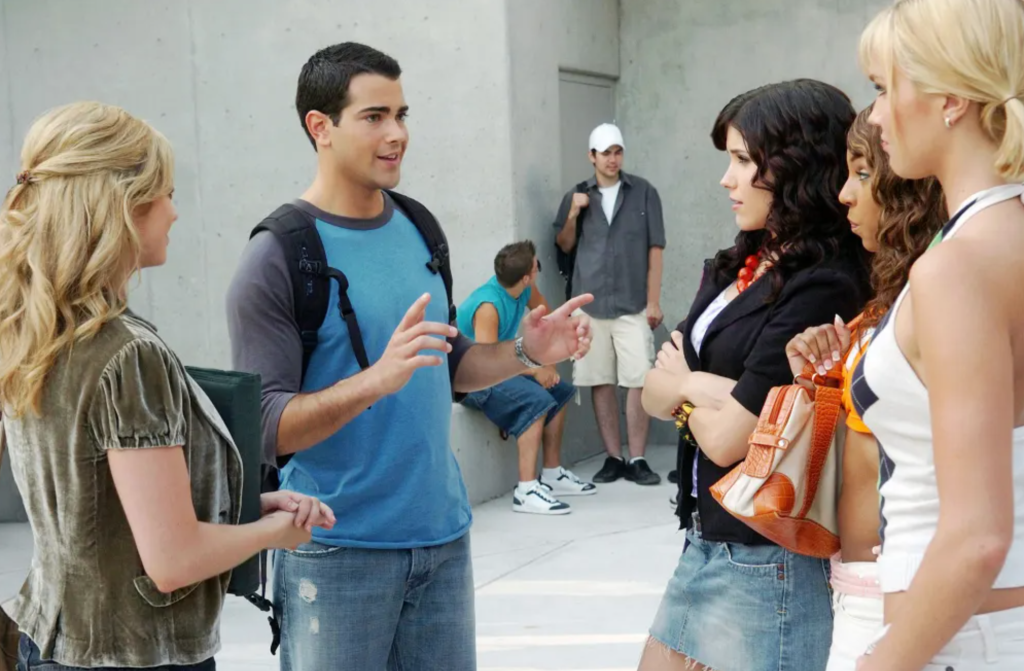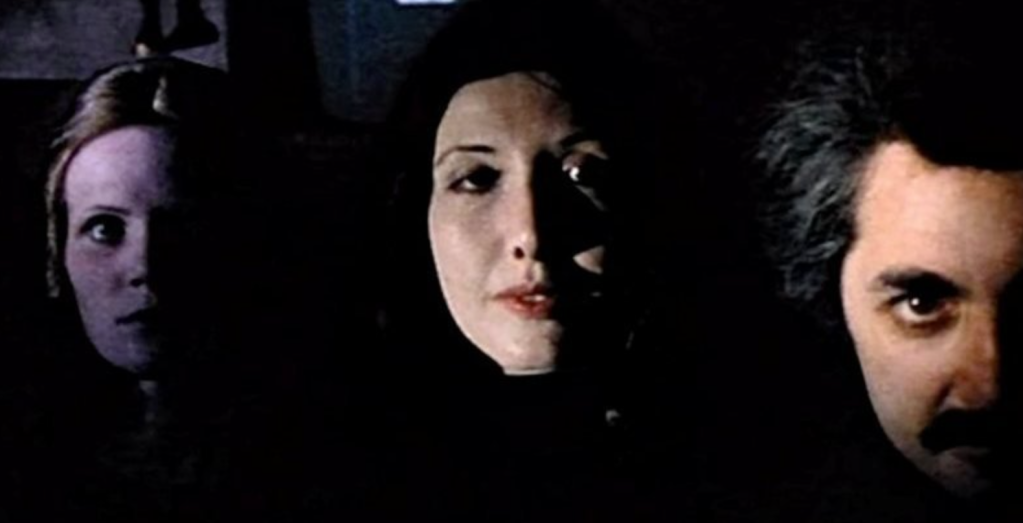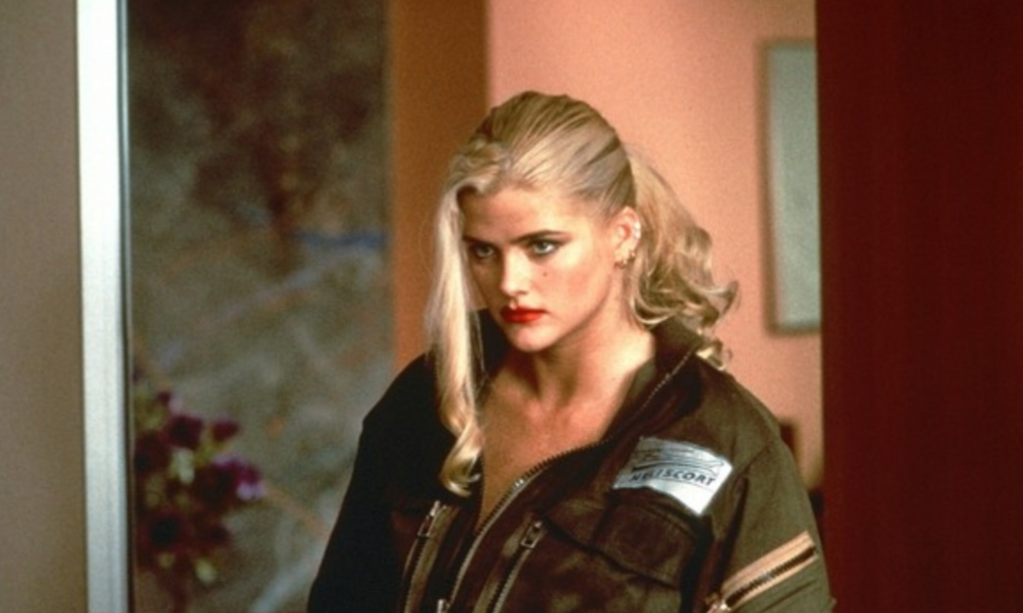This is the seventh edition of Odds & Ends, a capsule-review column collecting brief notes on movies taken throughout the month.
Battle Royale (2000), dir. Kinji Fukasaku
A group of people, some friends and others strangers, are dropped off against their will at an unfamiliar, inescapable locale and tasked with the unimaginable: fighting to the death until only one person remains. I am not talking about Suzanne Collins’ The Hunger Games (2008) but the literary adaptation it’s derivative of, Battle Royale. The opponents in this deathmatch are members of a high-school class, who’re living in a near future where the lethal competition has been governmentally approved to curb youthful delinquency. The gory movie, which diverges from Collins’ blood-soaked satirization of reality TV and the 24-hour news cycle, is contemptuous of the societal normalization of the no-questions-asked control adults have over children. (Fukasaku was reminded of his scorn for adults — born of World War II-related atrocities — when he read the 1999 Koushun Takami novel on which the film is based.) The movie is thrilling in a way that also makes you nauseous; there is some inspired dark comedy coming from how onetime outcasts become top dogs on an island where cliquish allegiances won’t really get you anywhere. But the gravity of the situation is never minimized, the ambient tragedy the strongest when love between characters is professed before last breaths are taken.
Untamed Youth (1957), dir. Howard W. Koch
Two pretty blond sisters who couldn’t be older than their early 20s played by Lori Nelson and Mamie Van Doren are arrested for the high crimes of hitchhiking and swimming in the buff. They’re given the choice in court to either carry out their sentences behind bars or in the never-ending fields of a middle-of-nowhere Texas farm where they’ll spend their days picking cotton. They go with the latter (the food and beds are probably better) and brave various dramas involving their fellow young prisoners and their superiors. Untamed Youth is probably best known for an element that unnaturally juts out in its narrative: the several rock ‘n’ roll musical numbers that Van Doren, often wearing the kinds of form-fitting outfits for which she was associated at the time, performs, because why not offer that in a movie that is otherwise not a musical? Van Doren was, it’s said, the first actress to do that sort of thing in an American movie; good for her, even if her gusto outclasses her voice.

Brittany Snow, Jesse Metcalfe, Sophia Bush, Ashanti, and Arielle Kebbel in John Tucker Must Die.
John Tucker Must Die (2006), dir. Betty Thomas
I like John Tucker Must Die’s premise — a group of rightfully pissed-off high-school girls band together to enact revenge on the pretty-boy serial cheater who broke their collective heart — but it starts getting monotonous once you realize that there isn’t much more to it than its mild love games. None of the girls is written as much more than a chess piece, though it’s hard not to be won over by the affable Brittany Snow, who plays the movie’s roped-in, in-over-her-head lead. She’s the only one who ever suggests real vulnerability; I cared about what might happen to her.
Glitter Goddess of the Sunset Strip (1991), dir. Dick Campbell
It’s often said that everybody has at least one book inside them. Llana Lloyd has inside her a hypnotically strange autobiographical documentary supposedly directed by a guy named Dick Campbell about whom I can’t find any information outside of the film. Lloyd’s claims to fame are that she spells Lana with two Ls and was at one time among Alice Cooper’s stable of groupies. But this grainy, amateurishly made straight-to-VHS movie isn’t really about that, even though it touches on that time of her life prominently and with stilted reenactments including a Cooper lookalike. (The film structurally is made up of other reenactments, interviews from various talk shows on which Lloyd appeared, and mannered narration.)
Glitter Goddess of Sunset Strip is more about Lloyd’s turbulent home life growing up — her mother was gay and said to be “the most respected, revered, and sought-after lesbian in Orange County,” and her father was prone to having yearly a handful few schizophrenic episodes — and the ways it had such a strong effect on her that she eventually started a support group for children of gay parents. On talk shows Lloyd shakily tries clarifying to a general audience that gayness is normal while also ostensibly coming on the show to talk about how much that gayness was so inextricable from that childhood trauma that she felt inclined to start a support group because of it. The movie is a work of delusional grandeur — Lloyd sees herself as important because of the Cooper connection and because she was raised by a dysfunctional lesbian — watchable precisely because it’s a work of delusional grandeur, turned more indelible because of its littering of unintentionally goofy one-liners (“I was artificially inseminated in England and my gay husband became agent zero; “get your lips off my bitch!”; “‘Oh hi, James Woods. What do you mean, do I like to fuck men on the hoods of cars?’”).

From Satan’s Black Wedding.
Satan’s Black Wedding (1976), dir. Nick Millard
Horror is arguably the genre most amenable to behind-the-scenes ineptitude. If it hits just right, that ineptitude can inadvertently make everything have the off-balance feeling of a nightmare. Case in point for Satan’s Black Wedding, a no-budget horror movie combining vampire- and occult-film clichés with such narrative enervation that it struggles to even get past the hour mark. But the woozy visual framing, surprising number of genuinely freaky images, and trembling Roger Stein score make it unexpectedly effective. I was a little anxious as I watched it in my shadow-enveloped bedroom after midnight.
Dark City (1998), dir. Alex Proyas
Dark City is set in a distant future, or maybe not, where creepy overlords dictate the lives of the masses they ominously surveil. This does not, it goes without saying, sound very far-fetched. Co-writer and director Alex Proyas turns it into a riveting noirish fantasy where the claustrophobic metropolis where the film is set never sees the sun and where the means of control are arguably more sinister than they are in The Matrix (1999). I’ve seen people call Dark City the straight version of the former and would have to concur.

Anna Nicole Smith in Skyscraper.
Skyscraper (1996), dir. Raymond Martino
Anna Nicole Smith does Die Hard without much of a budget or a theatrical release awaiting it. I would say that Skyscraper a lot better than it sounds, but I think that sounds pretty good.
Delirium (1987), dir. Lamberto Bava
I didn’t particularly like this giallo about an almost absurdly sexy erotic-magazine editor (Serena Grandi) being terrorized by a murderer killing everyone in her life before getting to her. But I loved its pastel- and glass-heavy ‘80s interiors and the last chance it provides to see Capucine’s magnificent face before her sad, untimely death three years later.
